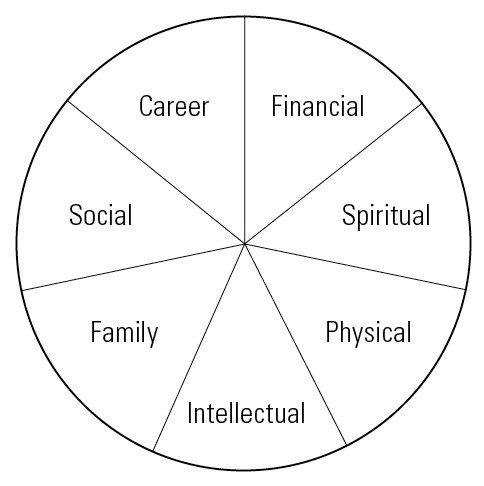I want to tell you a secret right up front with this post: There is no magic behind using content marketing to sell your products or services.
I should know. I’m still patiently waiting for my Hogwarts letter even as I eagerly anticipate The Cursed Child (OMG! I KNOW, RIGHT?!?).
But when you start to get content marketing right — when things start happening, when you watch your metrics head in the direction of your dreams, when your little analytics graph starts to look like the Loch Ness Monster — it can feel magical.
But what it really is, is a plan coming to fruition.
In one of my last posts, I tried to debunk the idea of passive income by showing you the steps to my most recent content marketing win. Yes, my bank account says I earned upwards of $3k in a 24-hour period. But it doesn’t show the time and effort I put into it in the four weeks or so leading up to that 24-hours.
Have you ever wanted a magic wand that you could wave and say, Expecto Salesonium! and then sit back and watch as your customers line up with a happily glazed over look on their faces to start buying your latest thing?
OK, it’s not quite that easy, but with a clear strategy and a little work, you can create content that creates magical results for your business.
The MAGIC way to use content marketing to sell
Today, I’m going to give you the recipe — the magic spell, the potion ingredients, the bippety-boppety boo — for creating that kind of content marketing magic in your own business:
- Mindfully Plan
- Ask the Right Questions
- Explore the Gap
- Imagine the Possibilities
- Call to Action
If you’re interested, I’ve laid this all out as a checklist in a printable PDF. You can click here to join our free resource library and download it.
Mindfully Plan
Everything starts with a plan.
If you want to cook a recipe, you read the whole thing first to make sure you have all the ingredients and equipment. If you want to brew some Polyjuice Potion, you have to plan ahead because that shit takes a month to brew properly.
And if you want to create magic with your content marketing, you have to have a plan.
In my mind, this means two things:
First, you must have a plan for the way in which all your content comes together to paint your bigger picture and lead people down the path to purchase. You have to understand what you hope to accomplish with each post or piece of content you create. What is the goal of this content? What is it designed to do to support my business?
Second, you must have a plan for what you will do when you sit down to write. On a recent episode of the Get Paid Podcast (one of my current faves!), Claire and Val were talking about whether there should be a “system” you create when you sit down to blog. Val said the system was more about the things you do around posting: uploading, formatting, adding images, and so on.
But I respectfully disagree: there is absolutely a system around writing. If you want to write better, the fastest way to do it is to create a system around what you do when you write, including planning out your topic, setting aside time for research, scheduling time to write, and putting your words through an editing process. I lay it all out in this post.
To mindfully plan, ask yourself:
- What is your topic?
- Where does this fall in your sales cycles (AIDA)?
- What is your business goal with this piece of content, and how will you measure it?
- What steps do you need to take to create this content? Bonus points for adding an estimate of how long each one will take.
Ask the Right Questions
Asking questions is the next ingredient in your magic spell, and it is all too often overlooked.
You must constantly — constantly — be asking: “What do my potential clients and customers need and want?”
Asking this one simple question regularly, and truly committing to listening to the answers (instead of assuming you already know the answers) is vital to creating content that leads to a sale.
Something that my mentor, Tara Gentile, has been talking about lately is that all marketing is a conversation; but we wrongly assume that we’re the ones that are supposed to be doing the talking.
As a content marketer, you should listen more than you speak.
By listening, you learn exactly what your audience wants, and then you can create that thing for them.
Listen for the problems, the struggles, what’s working, what’s not working; and then from those gleanings, ask yourself, How can I help?
Make note of the answers: Those are your content topics that will spark the magic.
To ask the right questions, make note of:
- What are my customers saying about their problems in public? What do I think they’re not saying out loud?
- What are they doing to try to solve their problem right now? (Or, what are they not doing?)
- How do they feel about the problem? About the solution?
- How can I help?
Explore the Gap
In every sales conversation — whether you’re having it on the phone, over coffee, or over this digital network of ones and zeroes we call the Internet — you must explore the gap between where the potential customer is now and where they could be with your help.
It’s the classic before and after scenario. It’s why makeover shows are so popular, why before and after photos are so convincing, and why case studies are so compelling to read.
A strong before and after — with a “before” the reader can relate to and an “after” they desperately desire — is, bar none, one of the best ways to sell with your content. This goes for blog posts, social media, videos, sales pages, emails, or in-person communications.
Helping people see where they are and then painting a picture of where they could be works like magic to help them make the choice to invest in your solution.
Explore the gap by asking them to consider things like:
- What would it be like if your problem was suddenly solved?
- How is not solving this problem impacting you?
- What is the value of the time you’ve wasted because of this problem?
- What would it be worth to you to have this solved forever?
Imagine the Possibilities
Next, you must encourage your prospects to imagine themselves solving their problem — with your help.
This is the essence of creating a “desire” post; it’s about stoking that deep desire by helping them visualize what life will be like when they buy your product or service.

The wheel of life is an assessment tool used by some life coaches, but it’s also a great way to test your offer — and your message of desire — against what people really care about.
Each section of the wheel is a section of life that people care about. These are kind of the basic desires for modern people. If you can measurably improve their lives in one of these sections, you’re practically guaranteed a market for your product or service.
So let’s look at an examples: My Strategy Sessions save people time, and ultimately help them earn more money. But I can say that more convincingly if I remind them that it will improve their business (career), and make them more money (financial), so that they can spend less time at their computer and more time with their family (family) and friends (social).
Depending on my ideal customer, I could appeal to a different section of the wheel. Maybe a Strategy Session will save them time so that they can spend more time working out (physical) or writing their book to become a thought leader (intellectual). Different sections will appeal to different customers.
The more sections of the wheel I can appeal to here, the more appealing and desirable my offer will be.
To help them imagine the possibilities:
- Ask: Can you imagine how this solution will get you where you want to be?
- Paint a very descriptive picture of what will happen after they have your solution.
- Use case studies, testimonials, and before-and-after scenarios of real people for the most credibility.
- Touch as many sections of the wheel of life as make sense with your offer; the more sections, the more appealing your offer will be.
Call to Action
Something that totally baffles me as a writer and as a marketer is how often I see people totally neglect a call to action.
My mother spent 20 years of her career as a sales woman, representing high-end kitchen wares and tabletop goods to major retailers like Neiman Marcus, Dillard’s, Crate & Barrel and others. When I started my own business, the best advice she gave me was this: Ask for the sale.
You must ask for the sale.
This goes for actual sales, with a big “BUY NOW!” button, as well as softer “sales” where you’re asking for the opt-in, the like, the share.
Copywriting studies have shown that you have to be ridiculously specific when asking for the sale, too. You must say things like, “Click the button below and fill out the form to receive your…” because apparently the average user needs very. specific. instructions.
But it goes beyond the call to “click here” or “buy now;” asking for the sale is also about reminding people of their problem, putting limiters (like a limited time or limited number) on the offer, and poking them a little in their FOMO center. (Fear Of Missing Out)
To create a strong call to action:
- Remind people of what they will be getting before you ask for the sale.
- Use features over benefits. You can turn a feature into a benefit by adding, “so that…” and completing the sentence. (“The shirt comes in 6 colors so that you can choose the shade that perfectly complements your skin tone.”)
- Ask for the sale.
- Remind them that they don’t want to miss out — and give them reasons.
- Remind them of their problem.
- Put limiters on the offer.
- Be extremely, stupidly specific about how to take the action.
Ala-KAZAM!
When you use this MAGIC spell to use content marketing to sell — be it a single blog post, a series of posts, an ebook, an email sequence, or a sales page — you can be sure that you’re writing convincing, compelling copy that converts.
It’s almost… like magic.


You had me at Harry Potter…(got my Cursed Child tickets! woo!) but…
these are great tips!! Esp an important one to remember…” You must constantly — constantly — be asking: “What do my potential clients and customers need and want?”
Thanks Janet! Don’t let the Muggles get you down. 😉
This is such a useful post. I’ve learned so much. Thank you!
Glad to hear it Christine!
This post is like a blogging manifest!! <3
Love it!